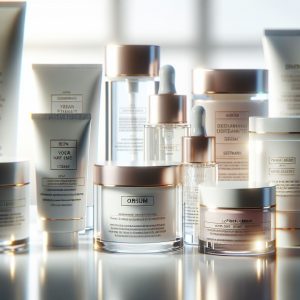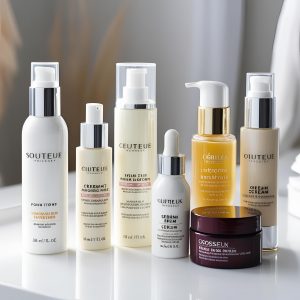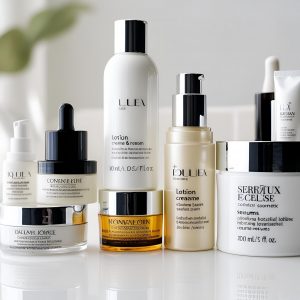The Essential Guide to INCI Names in Cosmetics: Understanding, Finding and Using
Introduction:
 Cosmetic products play a significant role in our daily lives, offering a wide array of beauty and personal care solutions. Behind every cosmetic product lies a diverse range of ingredients that contribute to its formulation. The International Nomenclature of Cosmetic Ingredients (INCI) name is a standardized system that helps identify and classify these ingredients. This comprehensive guide is designed for SMEs, new start-ups, and individual brand owners, exploring various aspects of INCI names, including their definition, significance, and how to find them.
Cosmetic products play a significant role in our daily lives, offering a wide array of beauty and personal care solutions. Behind every cosmetic product lies a diverse range of ingredients that contribute to its formulation. The International Nomenclature of Cosmetic Ingredients (INCI) name is a standardized system that helps identify and classify these ingredients. This comprehensive guide is designed for SMEs, new start-ups, and individual brand owners, exploring various aspects of INCI names, including their definition, significance, and how to find them.
What is an INCI name?
An INCI (pronounced ‘inky’) name stands for International Nomenclature of Cosmetic Ingredients. It is a standardized and systematic name used to identify cosmetic ingredients worldwide. These names are developed and published by the US Personal Care Products Council (PCPC). However, it is essential to note that just because an ingredient has an INCI name does not guarantee it is legal, safe, or permitted for use.
Finding an INCI name:
In the EU/UK, the official source for obtaining INCI names is the published Glossary: Commission Decision (EU) 2019/701. Additionally, there is a useful searchable online database called CosIng (Cosmetic Ingredients). This database provides not only the INCI name but also other identifiers for the ingredient, such as CAS number and EINECS number, along with information about its inclusion in any of the annexes of the Cosmetic Regulation. Although CosIng is generally reliable and helpful, it is crucial to remember that the database is not the legal source (the Glossary). To optimize searches on CosIng, use the ‘Advanced Search’ page and select ‘Ingredient’ to narrow down results effectively.
Purpose of an INCI name:
The INCI name serves several purposes in the cosmetic industry. It promotes uniformity and aids in the identification of ingredients, thereby reducing confusion among manufacturers, regulators, and consumers. For cosmetic brand owners, the primary purpose of the INCI name is to accurately label the ingredient list on product labels. The order of ingredients and the way their names should be written follow specific rules. While strictly speaking, only the INCI name should be used, many competent authorities, such as Trading Standards, accept the common name in brackets within the INCI name. For example, “Lavandula Angustifolia (Lavender) Oil” is an acceptable format.
Composition of INCI names:
 INCI names for some ingredients are straightforward, often closely resembling their common names (e.g., Glycerine / Glycerin). For botanical-based products, the INCI name typically derives from the plant’s botanical (Latin) name. In certain cases, the INCI name comprises three parts: the botanical name, the specific plant part used, and the ingredient type. For instance, the essential oil ylang ylang has the INCI name “Cananga Odorata Flower Oil” – “Cananga Odorata” indicates the botanical name, “Flower” denotes the plant part used, and “Oil” specifies the ingredient type. However, some INCI names may omit the plant part if it is irrelevant or unnecessary, as seen with “Pelargonium Graveolens Oil” (geranium oil).
INCI names for some ingredients are straightforward, often closely resembling their common names (e.g., Glycerine / Glycerin). For botanical-based products, the INCI name typically derives from the plant’s botanical (Latin) name. In certain cases, the INCI name comprises three parts: the botanical name, the specific plant part used, and the ingredient type. For instance, the essential oil ylang ylang has the INCI name “Cananga Odorata Flower Oil” – “Cananga Odorata” indicates the botanical name, “Flower” denotes the plant part used, and “Oil” specifies the ingredient type. However, some INCI names may omit the plant part if it is irrelevant or unnecessary, as seen with “Pelargonium Graveolens Oil” (geranium oil).
Limitations and verification:
It is important to recognise that INCI names may sometimes be outdated or refer to older, historical versions of botanical names. Additionally, botanical names may be associated with different common names and vice versa. In cases of ambiguity, it is crucial to confirm full identification with the ingredient supplier.
Where can I find the INCI name?
In the absence of an available INCI name on CosIng, the CPSR (Cosmetic Product Safety Report) provided by GCS will provide correct INCI names throughout the document, assisting in label preparation. When filling out submission forms, both the common name and INCI names are usually requested. While the INCI name can often be deduced from the common name, if unsure, the supplier’s documentation should be provided for verification. For mixtures or complex ingredients, trade names and supplier details should be included in the form.
Legal use of ingredients not listed in the Glossary:
It is legal to use cosmetic ingredients even if they are not listed in the Glossary, as long as they are deemed ‘safe’. However, it is essential to ensure the safety and compliance of these ingredients with relevant regulations before incorporating them into cosmetic products.
INCI names for colour ingredients:
Permitted colours are listed in Annex IV of the Regulation, and for the most part use the format CI nnnnn (Colour Index, followed by 5 numbers). There are a couple of exceptions worth noting – Mica has an assigned CI number (CI 77019) but the official INCI name is ‘Mica’; similarly, the CI number for Tin Oxide (CI 77861) is not used as an INCI name.
INCI names for scent ingredients:
Complex mixtures of scented components are designated with the INCI name ‘Parfum’. This allows perfume manufacturers and developers to maintain confidentiality and protect their formulations as trade secrets. To assess the safety of a ‘Parfum,’ manufacturers provide various documents, with the IFRA certificate being a critical one.
If the scented mixture is intended for a lip / oral product, the INCI name is ‘Aroma.’ In some cases, food flavouring ingredients are used in lip /oral products instead of Aromas, and the safety assessment can be based on either the IFRA certificate or documents supporting the ingredient’s use as a food flavour.
Another option for scenting products is to use essential oils (EOs), which are classified as ‘Natural Complex Substances’ (NCS). Since there can be variability between different batches of essential oils, this is taken into account during the safety assessment. Each individual EO is named in the ingredient list.
It is possible that a ‘Parfum’ is entirely composed of only EOs. In this scenario, the Responsible Person has the option to decide whether to use the term ‘Parfum’ on the ingredient label or list the individual EO names. However, this approach only works if the levels of EOs are known so that the correct order can be determined, or if the ‘Parfum’ mixture is less than 1%, in which case, it is permitted to list the ingredient names in any order. If the ‘Parfum’ is a mixture of EOs and other components, using the INCI name ‘Parfum’ is mandatory, and listing individual EOs alongside it is not allowed.
Remember, the ingredient list serves as a legal requirement for cosmetic products. Additional information on the label can describe the product’s contents differently, while remaining accurate and truthful. For example, if a perfume contains orange oil, it is permissible to state in the product description something along the lines of “contains essential oil of orange as a natural component of the perfume,” even if the specific ingredient name “Citrus Aurantium Dulcis Peel oil” is not listed in the ingredients (INCI) section.

Can a QR code replace the ingredients list on a sample?
The current regulations mandate the inclusion of the ingredient list on the label. However, there are ongoing discussions about the possibility of allowing QR codes for this purpose in the future. The updated list of allergens that will need to be listed has recently expanded, and this has caused discussions around using a QR code to be a priority. The legislation for the list of ingredients has been published but does not mention alternative ways to provide that information, so currently a QR code is not allowed.
What if I can’t fit the ingredient list on my label?
In situations where space constraints make it impractical to include the full ingredient list on the packaging, there are alternative options to comply with regulations. For products where it is physically impossible to include the list on the packaging, it should be provided on an attached label, tag, tape, card, or enclosed leaflet. If these options are not feasible, as in the case of certain products like soaps or bath balls, the necessary information must be displayed on a notice placed close to the container where the cosmetic product is offered for sale.
For cosmetic products that are not prepacked (‘naked’) or are packaged at the point of sale upon request, the UK authorities require the information to be presented on the container used for supply or on a notice near that container. It is important to note that different EU countries may have varying regulations in this regard, as harmonisation on this specific point has not been achieved.
References
Safety Assessor Qualifications
MSc (Distinction), University of Strathclyde
BSc (Hons) Chemistry, University of Nottingham
Certificate - Safety Assessment of Cosmetics in the EU, Vrije University Brussels
Get in Touch
If you would like to discuss any of your products or ranges, please fill out our contact form




